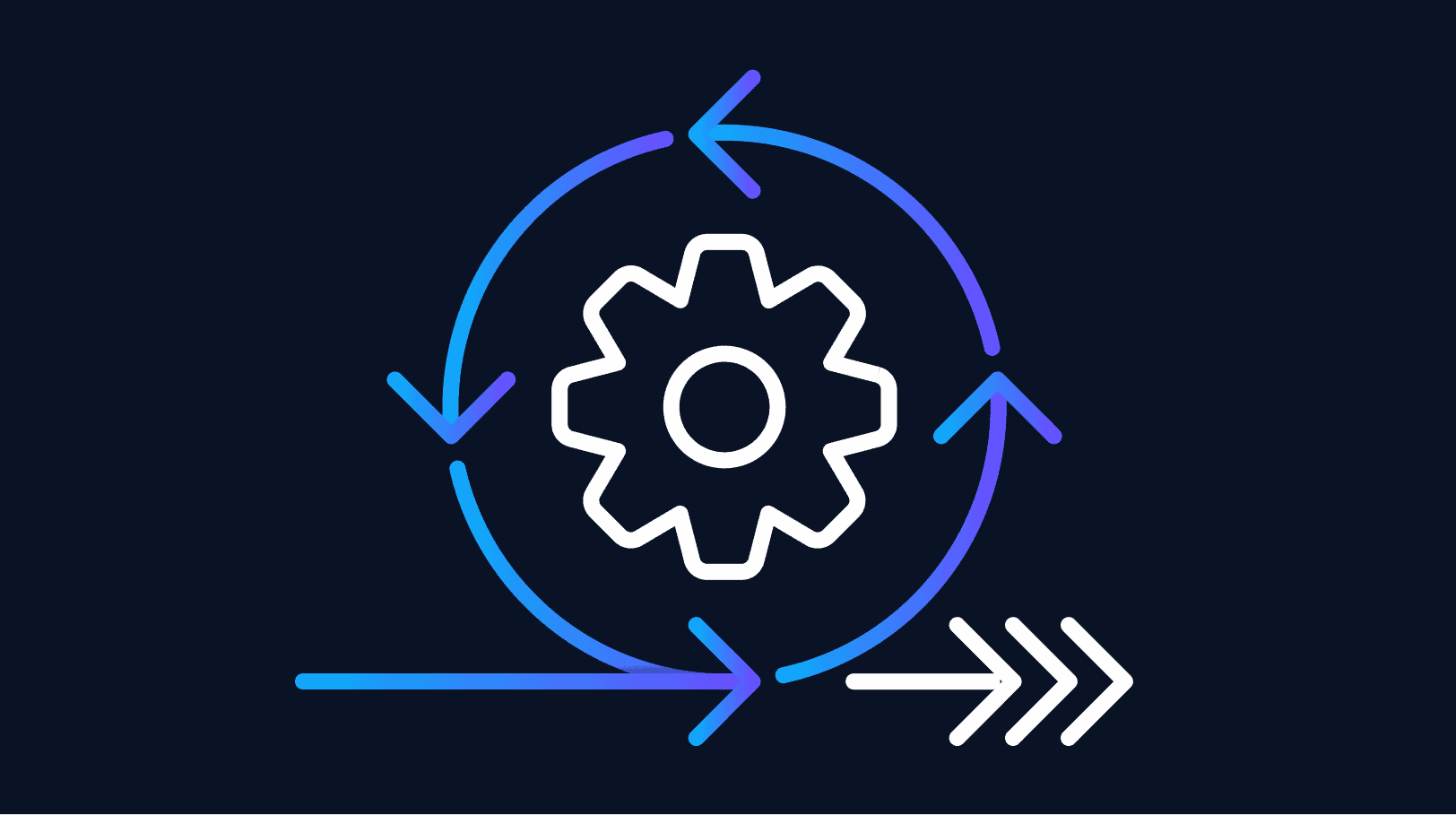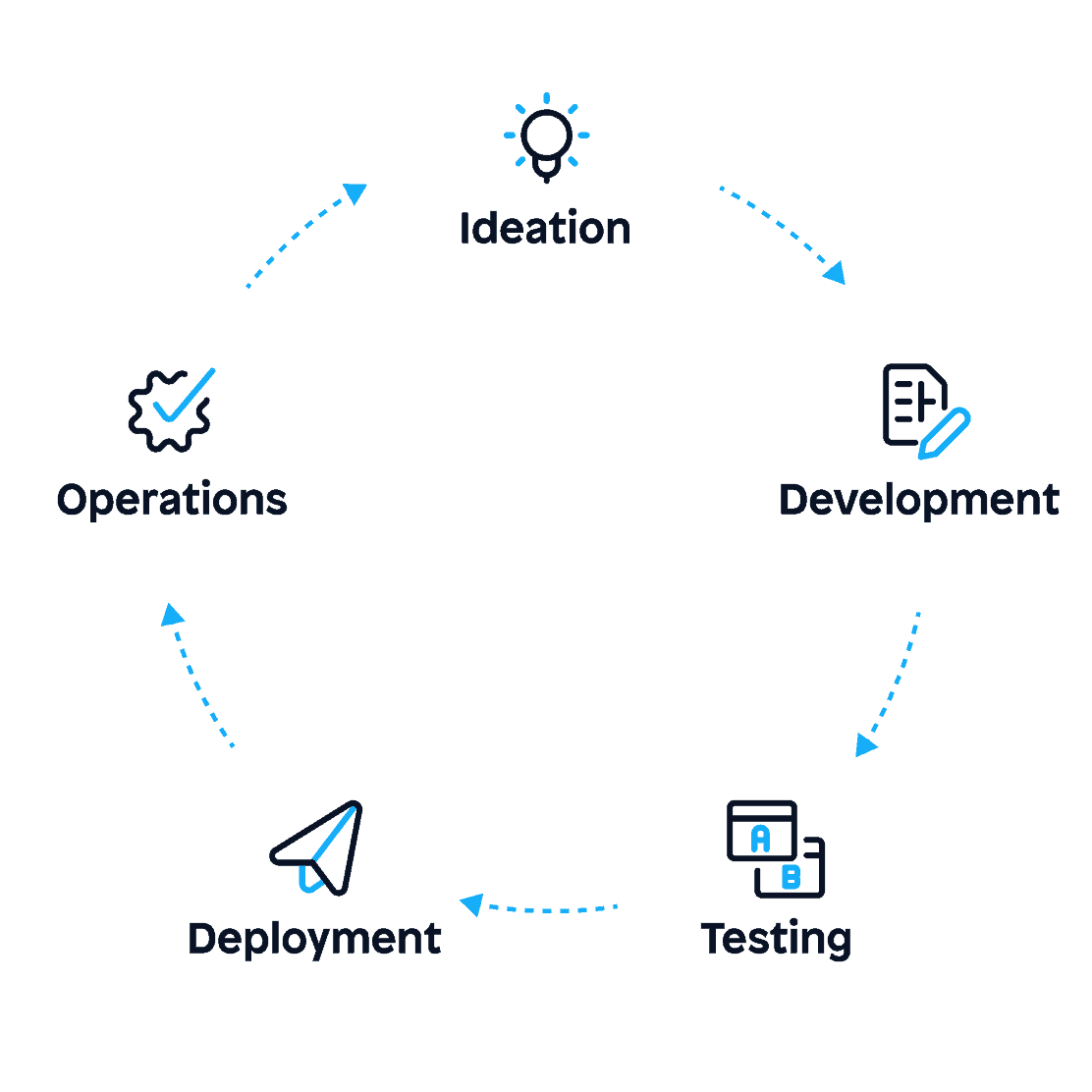The 5 Stages of the Agile Software Development Lifecycle

The Agile software development lifecycle is a straightforward, systematic software methodology. When followed and implemented properly, Agile helps teams deliver high-quality software on time and within budget.
Agile includes the five stages of the software development lifecycle (SDLC):
- Ideation
- Development
- Testing
- Deployment
- Operations
Read on for a closer look at the ins and outs of each stage of the SDLC and find tips to improve success throughout the Agile software development lifecycle.
The Agile process background
With traditional (or waterfall) project management, teams work in linear phases that cannot advance until final approval. So, if a phase is completed, it can be time-consuming and costly for your team to revert back to a previous phase.
Agile, on the other hand, is an iterative approach to software development. Instead of working in long phases, teams work in small timeframes with continuous feedback loops. In Scrum, these timeframes are called sprints and are usually one to three weeks.
Throughout sprints, teams collaborate and provide feedback on the work in progress. Frequent communication makes it easier to adapt to changing business and user needs and leads to the delivery of high-quality software products.
What are the phases of the Agile lifecycle?
As we mentioned, the Agile software development lifecycle has five structured phases: Ideation, development, testing, deployment, and operations. The phases might differ depending on your chosen project management method, like Scrum vs. Kanban, but the end goal remains the same.
Stage 1: Ideation
All successful Agile software development projects begin with an idea.
To go from idea to outcome, an Agile product owner (PO) determines the project scope. They work closely with stakeholders, the business team, developers, and future app users to understand the software requirements. The Agile PO also estimates the time, resources, and cost required for the project.
Guided by the greater team, the PO pieces together a project vision by:
- Defining the purpose and goal of the new software
- Determining and documenting business and user requirements
- Prioritizing tasks and allocating resources
Stage 2: Development
When planning is complete, teams can start building the first iteration of the software in incremental steps.
The development phase includes all related production tasks in the software development lifecycle, such as UX/UI design, architecting, and coding. Developing the first iteration of a software product is often the longest stage of the Agile application development lifecycle. However, with AI tools, developers can save time by automating certain repetitive tasks.
Stage 3: Testing
When the team is happy with the first iteration of the software, it’s time for testing and quality assurance. This happens before the software is released to the general public.
Testing is a crucial part of the Agile process, and it’s always performed on the most recent iteration. It helps teams identify issues as early as possible in the process. And with quick feedback loops, developers are able to deliver reliable software.
The Agile team tests applications to ensure full functionality by:
- Checking that the code is clean
- Addressing bugs and errors
- Performing trial runs
Stage 4: Deployment
After extensive testing, security assessments, and documentation updates, the Agile team deploys the software to the cloud or an on-premise server.
Once deployed, the product is live and accessible to customers. Deployment tends to be the most celebratory moment in the SDLC: You did it! Pat yourself on the back. But there’s one more stage to go.
Stage 5: Operations
After pushing the magic button, the work continues. Ongoing maintenance and operations are necessary to keep the software relevant and error-free. Support will involve squashing big, addressing flaws, maintaining functionality, and improving features.
As users engage with the app, there will be opportunities to collect more feedback and improve the release in future iterations.
5 ways to improve software development agility
The Agile software development cycle is about bringing out the best in your team. At the foundation of Agile are five key areas that propel speed and agility: Methodology, architecture, automation, infrastructure, and technology.
It’s important to honestly evaluate where your organization lies in each area. Are you ready to accommodate changing business needs? If you are currently less mature in a specific area, you have more opportunities to improve.
Let’s look at each of the five focus areas and some recommendations.
1. Methodology
Improve collaboration between business, stakeholders, and developers to ensure a faster time to value. All parties should be involved in the discovery of project requirements. This enables rapid adoption to changing business needs and improves speed and agility throughout all phases.
2. Architecture
Design your solutions using the principles from a component-based or microservices architecture. This architecture enables teams to create autonomous and independent systems, reducing the impact of change and increasing flexibility.
3. Automation
Manual work is time-consuming and prone to error. Start by measuring the time spent on all manual tasks and continuously automating the most time-intensive work.
4. Infrastructure
A flexible infrastructure keeps teams adaptable to continuous change. Many IaaS providers already allow for immediate provisioning of servers. The next step is containerization, which, in combination with automation, can lead to self-service and fully automated provisioning.
5. Technology
Technology is what ultimately enables agility. To achieve the most value, choosing the right technology for the job is imperative. While identifying your focus areas, look at your underlying business goals. Select a tool that helps you achieve those goals with the least amount of effort.
Do your due diligence and adopt a combination of technologies that can collaboratively support you in becoming Agile. Choose open technologies that will quickly increase your agility and grow with you.
How does DevOps fit in?
Adopting DevOps tools and practices won’t automatically make an organization Agile. Each Agile software development phase has a different goal, and achieving those goals requires a tactical approach.
Agile development helps DevOps teams thrive, and low-code development platforms provide the environment where the two can unite.
The Mendix low-code platform is designed with Agile in mind. You can fit Mendix into your existing processes in different ways:
- Connect your existing Agile requirements suite
- Leverage the built-in Agile toolset
- Run your apps on the Mendix Cloud
Frequently Asked Questions
-
What is the Agile software development lifecycle?
The Agile software development lifecycle (SDLC) is a systematic and iterative process for delivering software. It consists of five stages—ideation, development, testing, deployment, and operations. Agile emphasizes flexibility, collaboration, and continuous feedback to ensure high-quality software that adapts to changing business needs
-
How is Agile different from traditional SDLC methods?
Unlike traditional methods like Waterfall, which rely on sequential phases, Agile uses short, iterative cycles called sprints. Agile fosters collaboration, quick feedback loops, and continuous improvement, enabling teams to respond to changes more effectively and deliver value faster.
-
What are the five stages of the Agile SDLC?
The five stages of the Agile SDLC are:
1. Ideation: Define goals, requirements, and scope.
2. Development: Build the first iteration with incremental steps.
3. Testing: Ensure functionality, fix bugs, and improve quality.
4. Deployment: Release the software to production.
5. Operations: Maintain and enhance the software based on user feedback. -
How do feedback loops improve Agile development?
Feedback loops are central to Agile’s success. Teams use continuous feedback from stakeholders and end-users during each sprint to identify issues, adapt to changes, and make improvements. This iterative process ensures the final product aligns with user needs and business goals.
-
What tools can help manage Agile development?
Low-code platforms like Mendix are designed to support Agile development. With built-in Agile toolsets, integrations with existing requirements suites, and seamless collaboration capabilities, Mendix helps teams work faster and smarter across all stages of the SDLC.

